Coal Mines And Buried Promises In Hasdeo Aranya
First published in Sanctuary Asia,
Vol. 42
No. 2,
February 2022
Text and Photographs by Pranav Capila
Ramlal Kariyam stands on the edge of a promontory, squinting in the noonday sun. Below him, under a bright blue sky and amidst the green shimmer of the jungle all around, the land lies stripped, comatose, covered in a shroud of coal dust. Where virgin forest once stood a gangrenous pit gapes, steep sided, with maggot-yellow machines gnawing at the earth. This is the Parsa East and Kente Basan (PEKB) open-cast coal mine.
Ramlal surveys the scene for a while, then turns away. “Dekhna bhi mushkil hai,’’ he says; “it’s difficult for me to even look at it. There was a time when we weren’t aware of our rights. People took advantage of us. It won’t happen again.”
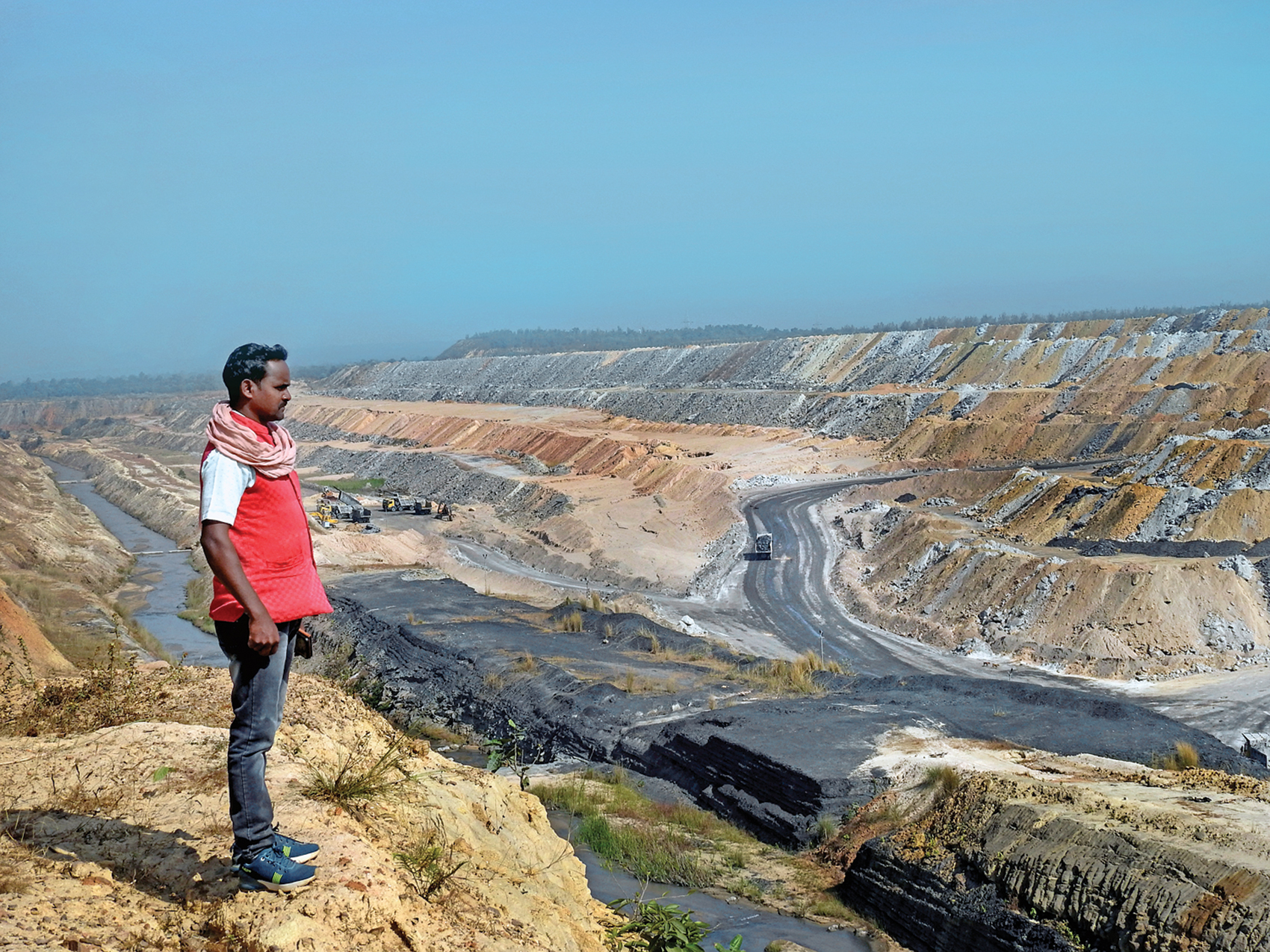
Ramlal Kariyam, a panch in Salhi village stands next to Parsa East and Kente Basan (PEKB), an open-cast coal mine allocated to the state-owned Rajasthan Rajya Vidyut Utpadan Nigam Limited and run by Adani Enterprises, the mine’s developer and operator. The mine lies in the Hasdeo Aranya forest in northern Chhattisgarh.
Promises And Lies
The PEKB mine is in one of 23 coal blocks that make up the Hasdeo Arand Coal Field (HACF) in northern Chhattisgarh. The coal field in turn lies within the 1,70,000 ha. Hasdeo Aranya forest, one of the largest contiguous stretches of dense forest in Central India.
This forest wasn’t supposed to be mined. In 2009, a joint study by the Ministry of Coal and the Ministry of Environment (MoEF) had identified HACF as a ‘no-go area’ given the region’s rich biodiversity. And although the Chhattisgarh state government had continued to press for coal blocks to be opened up for mining, the MoEF’s Forest Advisory Committee (FAC) had continued to recommend otherwise. Then, in June 2011, the MoEF decided to grant Stage-I clearance for certain coal blocks to be mined. In doing so, it rejected the recommendations of its own FAC with which it had concurred on three previous occasions.
A pattern had been established: make promises, break promises; seek expert opinion, ignore expert opinion.
In 2012, the Chhattisgarh state government’s assurance that it would not “come up for opening up of the main Hasdeo-Arand area” was recorded as part of the conditions under which Stage-II forest clearance was granted for the PEKB mine. In 2021, the Chhattisgarh state government decided that it would, on second thought, pursue proposals to mine other HACF coal blocks and expand mining in the PEKB block. That it did so against the recommendations of an expert study that it had itself commissioned was now just par for the course.
In January 2018, the Principal Chief Conservator of Forests, Chhattisgarh Forest Department, had sought a proposal from the Indian Council of Forestry Research (ICFRE) and the Wildlife Institute of India (WII) to conduct a comprehensive biodiversity assessment of the HACF region. While ICFRE was the Nodal Agency, the assessment was conducted jointly by WII and ICFRE.
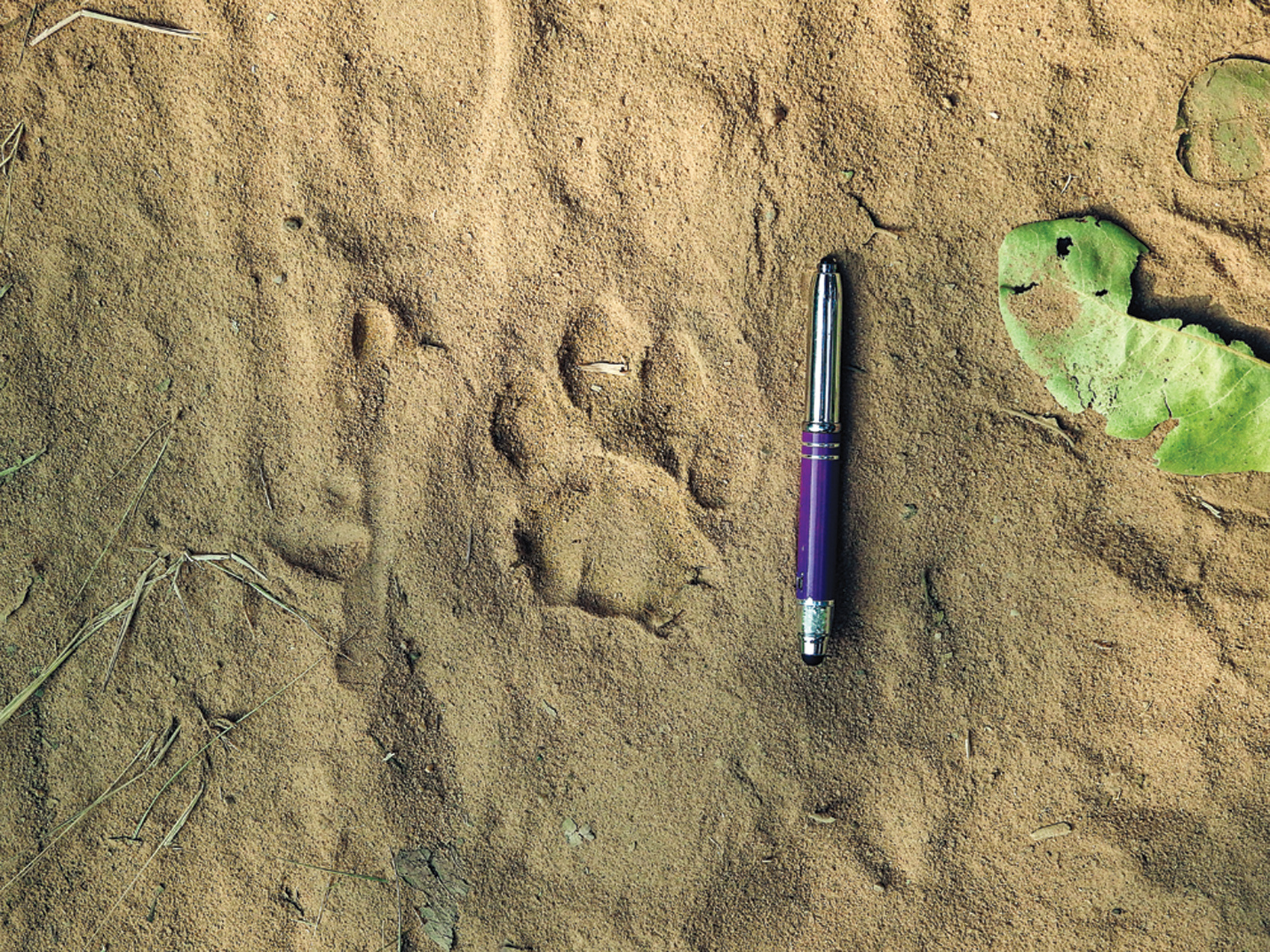
Tigers have been observed dispersing into Hasdeo Aranya from adjoining Protected Areas, establishing it as a critical link in one of India’s most important tiger landscapes. On December 10, 2021, the author photographed and geotagged this pugmark of a tiger that had been spotted earlier that morning in the Morga forest near Botopal.
The WII report, titled ‘Biodiversity assessment with emphasis on select faunal groups in the Hasdeo Arand Coal Field, Chhattisgarh’ (Tr No/2021/08), was submitted to the state government along with the ICFRE report in September 2021 (the ‘Executive Summary’ of the ICFRE report mentions that the WII report is enclosed in its submission as Volume-II). And yet, in its subsequent recommendation to the MoEFCC that further areas of HACF be opened up for mining, the Chhattisgarh government did the equivalent of sticking its fingers in its ears and shouting ‘la-la-la-la’, ignoring the findings and recommendations of WII’s extensive assessment.
Make promises, break promises; seek expert opinion, ignore expert opinion.
Shrouded Truths
The WII biodiversity assessment unequivocally established the HACF area’s “significant conservation value”. It recorded the presence of over 25 species of mammals in the study area (nine Schedule I species), several ‘Endangered’ species of herpetofauna, at least 82 species of birds (six Schedule I species), and over 167 plant species (18 ‘Threatened’). It observed that tigers had been found dispersing into the study area from adjoining Protected Areas and that “tiger conservation would be conditional on maintaining habitat connectivity [and] retaining forest cover” – thereby confirming the area as a critical link in one of India’s most important tiger landscapes. It also recorded the presence of 40-50 elephants (a “conservative minimal estimate”) and joined the dots between the threat to habitats and increased human-elephant conflict: “The coal mines along with the associated infrastructure development would result in loss and fragmentation of habitat [...] The human-elephant conflict in the state is already acute and has been escalating with huge social and economic costs on the marginal, indigenous local communities.”
Crucially, the report recommended that “mining operations may only be permitted in the already operational [PEKB] mine”, and that “other areas in HACF and landscape surrounding it should be declared as ‘no-go areas’ and no mining should be carried out considering the irreplaceable, rich biodiversity and socio cultural values.”
The state government’s response was to pretend that WII’s portion of the assessment didn’t exist. It seized instead on the ICFRE report’s recommendation that four coal blocks could “be considered for mining with strict environmental safeguards including appropriate conservation measures for management of surface water and biodiversity.” Never mind that the ICFRE report also contained several adverse observations, including that “significant geo-morphological/hydrological changes in river water courses” were observable and were “likely to increase further with the expansion of mining”, and that “mining related land use changes will have negative impact on forest cover/density, forest type, forest fragmentation.” The ICFRE report had also observed a lackadaisical attitude by Adani Enterprises, which operates the PEKB mine, regarding measures to mitigate environmental damage. But a giant rug of expedience was lifted and all inconvenient truths swept under it.
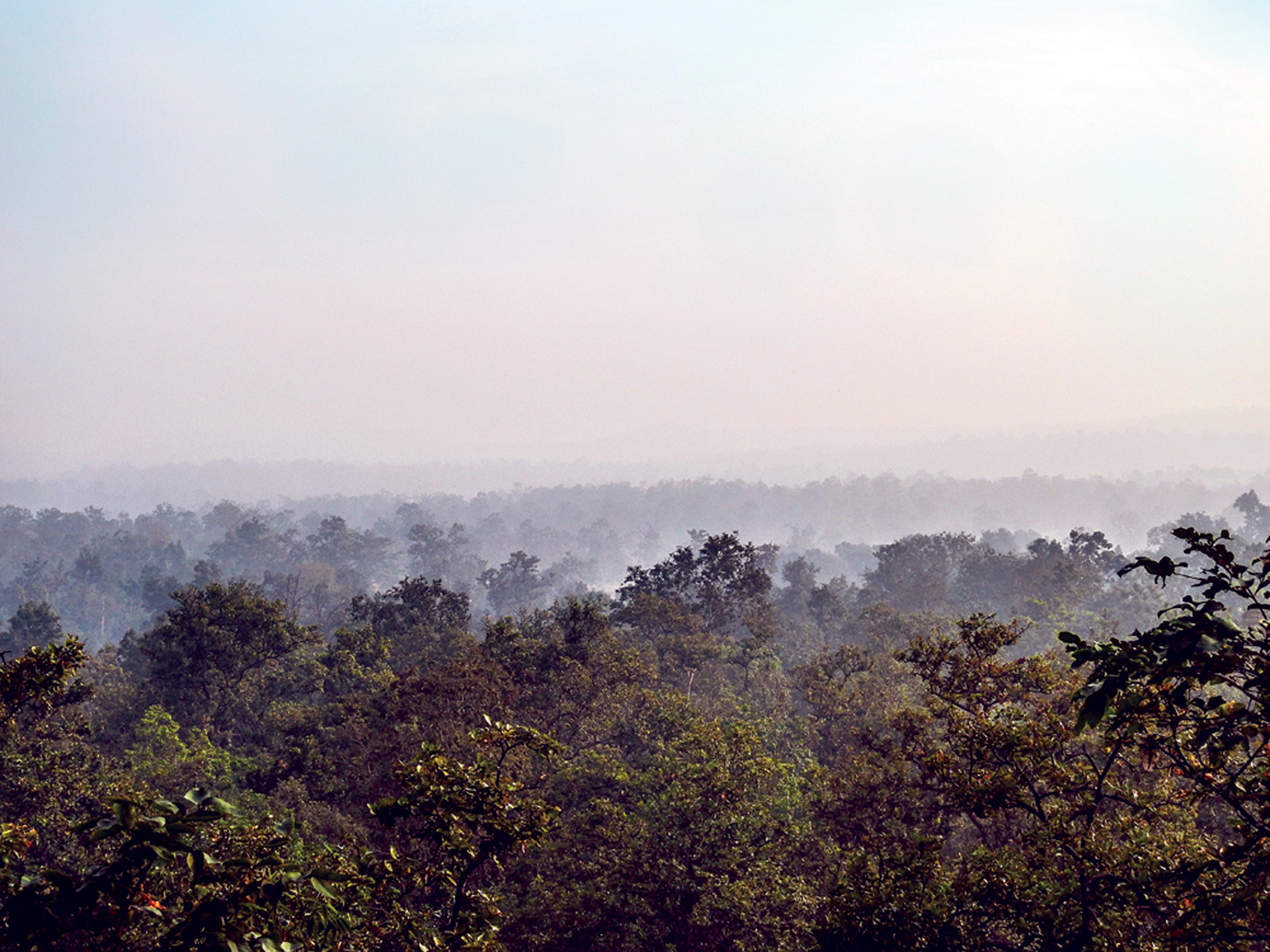
Sprawled across 1,70,000 gently undulating hectares, Hasdeo Aranya in northern Chhattisgarh supports a rich, irreplaceable biodiversity. The forest is also the catchment of the Hasdeo river, the Mahanadi’s largest tributary, and is therefore critical for perennial river flow.
Overlooked People
“Displacement due to mining operations will have serious impact on community in form of loss of livelihood, identity and culture.” That’s another part of the ICFRE report that the government ‘overlooked’. WII also conducted interview surveys in 23 villages in the HACF area, finding that the resident indigenous communities were heavily dependent on the forest for their livelihood, food, water and medicinal needs. These tribal communities “favour nature conservation” and “have a strong affinity towards wildlife and forests”, the WII report observed, and perceive “mining as a direct threat to their livelihood.”
Which brings us back to 27-year-old Ramlal Kariyam, a panch (member of the village administration) from Salhi village. The village lies in the Parsa coal block, adjacent to the PEKB mine.
For Ramlal and other adivasis residing in the HACF area, the mine-next-door is a portent of doom. They have seen the destruction it has wrought upon their ancestral forest and the lives of their relocated (displaced) brethren. They know their lands are under siege, not least because it has been claimed that this mine, which was supposed to provide coal till 2027, has already, mysteriously, been exhausted, necessitating the expansion of mining. Neither the state-owned Rajasthan Rajya Vidyut Utpadan Nigam Limited (RRUVNL), to whom the PEKB coal block is allocated, nor Adani Enterprises, the mine’s developer and operator, seem to know where all that coal went.
The Parsa coal block, which will also be mined by the RRVUNL-Adani Enterprises combine, is in sharp focus at the moment. In late October 2021, the MoEFCC, based on the state government’s recommendation (and the ICFRE-not-WII report), granted Stage-II clearance for final diversion of forest land in this block.
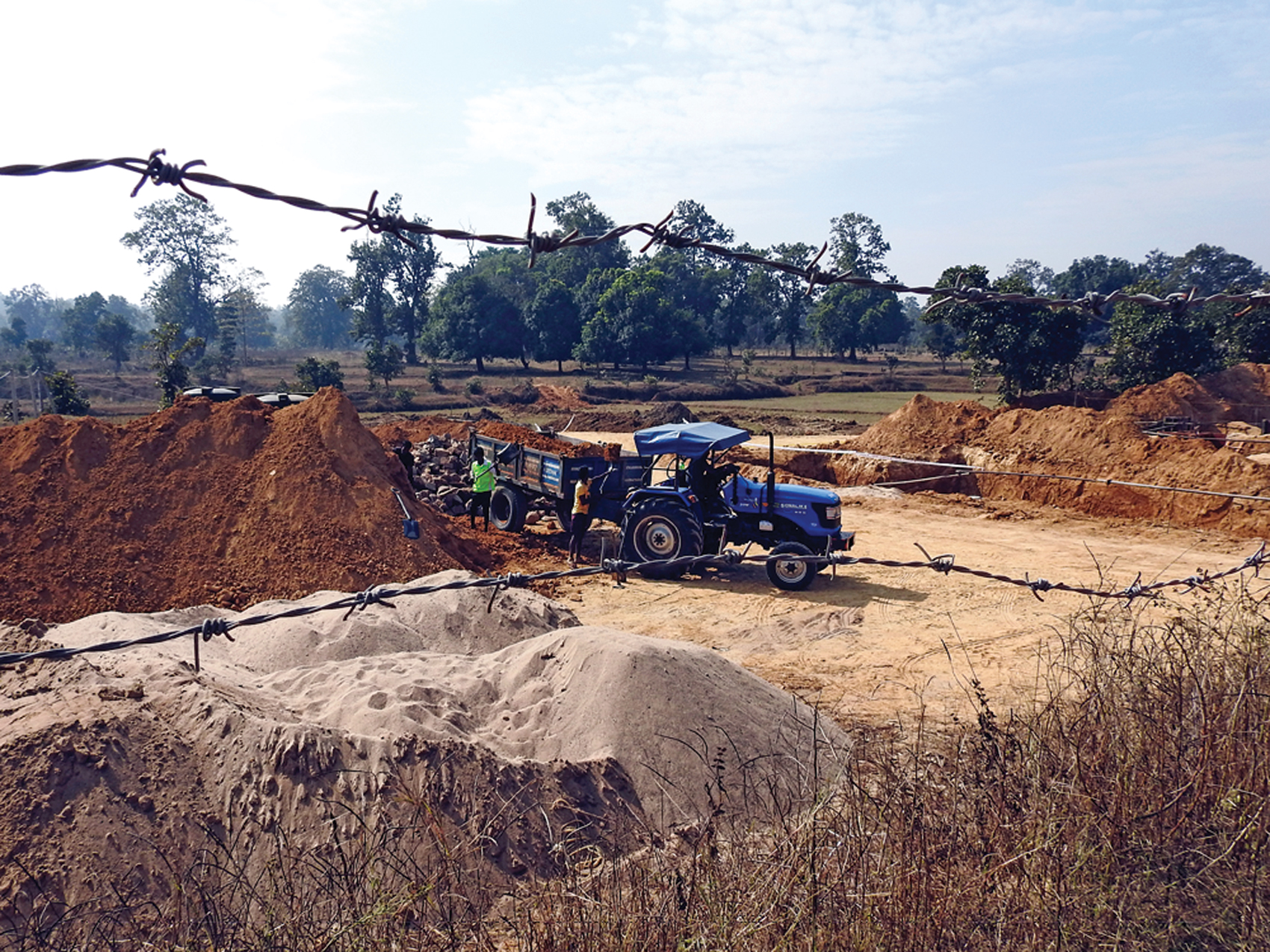
A mining pit in the Parsa coal block, next door to the PEKB mine. Areas of the Parsa block have already been dug up, despite the fact that land acquisition proceedings aren’t complete and there is a petition in the Chhattisgarh High Court alleging irregularities in the process.
Jal, Jangal, Zameen
United under the banner of the Hasdeo Aranya Bachao Sangharsh Samiti, the adivasis of Hasdeo have been agitating against the mining of their forests for the better part of a decade. When I visited the HACF region in December 2021, I found that every man and woman I met was extremely clued in about their rights and extremely unwilling to have them trampled. Yet the forces massed against them are formidable.
“People from the government and the mining company are pressuring us to sign away our rights,” 55-year-old Anand Ram of Salhi village told me. “They even brought the police here to threaten us. They tell us that we should accept whatever is being offered or else the money will get tied up in court proceedings. Some people have been scared into parting with their land.”
On the way from Salhi to Hariharpur I saw that areas in the Parsa coal block had already been dug up. This, despite the fact that land acquisition proceedings for the block aren’t complete and there is a petition in the Chhattisgarh High Court alleging irregularities in the process. “Whatever is happening in Parsa right now is illegal,” 52-year-old Thakur Ram Orkera from Hariharpura claimed. “They say that Gram Sabhas were held [in Salhi, Fatehpur and Hariharpur in 2017-18] and we consented to give up our land. This never happened. Our village heads were taken to Udaipur and under pressure, Gram Sabha agendas were changed to show that the matter had been discussed. Some of us had gone to Udaipur at the time and we were threatened. But we are not thieves that we should be scared! If we don’t fight for our rights, who will?”
In Fatehpur village (Parsa coal block) I met Muneshwar Singh Porte, 27, who told me how conflict with elephants had increased since an elephant corridor near the former Kete village was blocked by the mine, how contaminated run-off was regularly dumped into their streams, and how the “baara maasi” (perennial) nullahs they depended on for drinking water and irrigation now dry up in summer.
In Gidhmuri village, (Korba district, Paturia and Gidhmuri coal blocks) 80-year-old Sonai Ram Paikra declared that it was in the nature of governments to betray their people. “Tum hi raja aur tum hi praja (“you are both king and commoner”), they used to say when Panchayati Raj was first introduced. Ab humara jal, jangal, zameen chheen rahein hain, (“they are snatching away our forest, water and land for these mines. Then how are we kings?”)
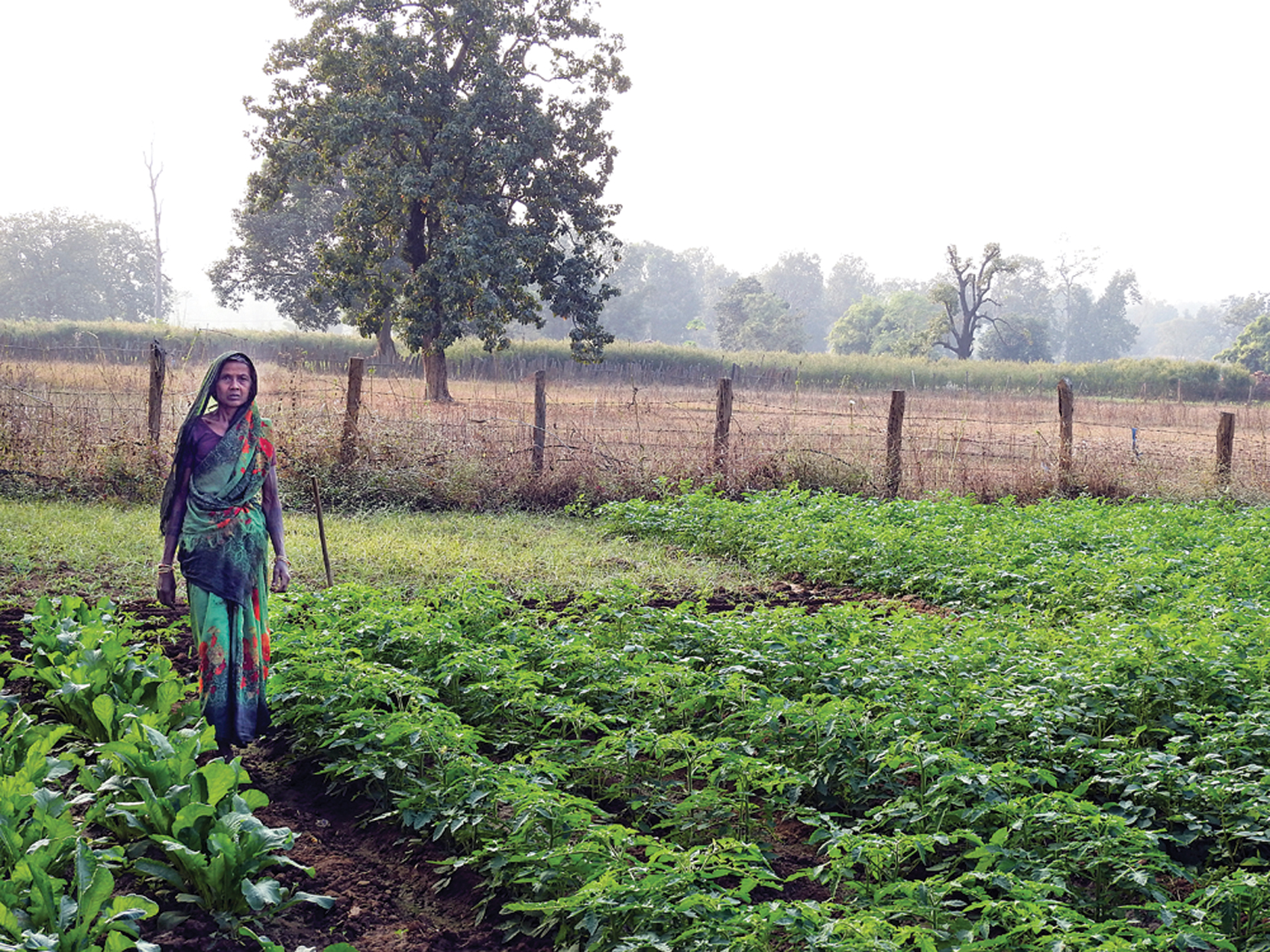
The fiery Aranya Bai, about 70 years old, at her vegetable field in Paturiadand village. The adivasis that reside in Hasdeo Aranya are heavily dependent on the forest for food, water, fuelwood, medicinal plants and Non Timber Forest Produce, which accounts for a large proportion of their annual income.
Sonai Ram was among the over 300 adivasis who undertook a 300 km.-protest march to Raipur last October, demanding the cancellation of mining projects and land acquisition proceedings that had been initiated without Gram Sabha consent. At least his exertions elicited some response, with the Chhattisgarh Chief Minister assuring protestors that HACF coal blocks in the Korba district would be included within the state’s Lemru Elephant Reserve and would therefore not be mined.
But history has shown that such assurances come cheap. And the fear is that Parsa and other blocks that fall in the Surguja district (and therefore won’t be included in the Elephant Reserve) are test cases. Once they go, gradually, inexorably, all of Hasdeo will be clawed away.
In Paturiadand, I met the aptly named Aranya Bai, about 70 years old, tending to a field next to her hut. She recalled a time when she was just a girl, when the erstwhile royals of Surguja hunted in these forests. “They killed tigers, leopards and deer, taking away pelts and antlers to adorn their palaces and to sell abroad,” she said. “Powerful people only know how to loot and sell. Like these government people, these mining people.”
“We have lived in this jungle for four generations. We get everything we need from it, it will sustain us for a thousand generations more,” she asserted. “Those who took money and gave up their land, they are beggars now. They are scattered here and there, divorced from this way of life. How can we, who thrive near the forest, be squeezed into some small resettlement quarter?”
She closed her eyes and rocked back and forth, pained at the thought. Then she turned and looked at me: “We are not asking for anything, just to live like we always have. Why can’t you people leave us alone?”






